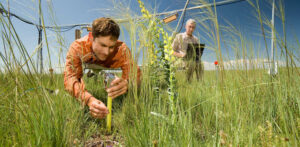April 8, tune in to this live stream 12:05 pm EDT on the World Agricultural Supply and Demand Estimates (WASDE) prepared and released by the World Agricultural Outlook Board (WAOB).
The WASDE report is released monthly, and provides annual forecasts for supply and use of U.S. and world commodities of interest to NJ producers like wheat, coarse grains, and oilseeds. The report also covers U.S. supply and use of sugar, meat, poultry eggs and milk.
“On April 8, the Secretary of Agriculture briefings on World Agricultural Supply and Demand Estimates (WASDE) report and the Crop Production report will be livestreamed for the first time at 12:05 pm EDT on USDA’s National Agricultural Statistics Service (NASS) youtube channel.
To watch, book mark this youtube channel link entitled Agricultural Statistics Board Briefing and take note of the commentary in the left hand tool bar. https://www.youtube.com/playlist?list=PLm8HaeFw1A1h0onChnDCLkYgMSxEnpsOk
For more information about the WASDE process and data, visit the WASDE FAQs page.

